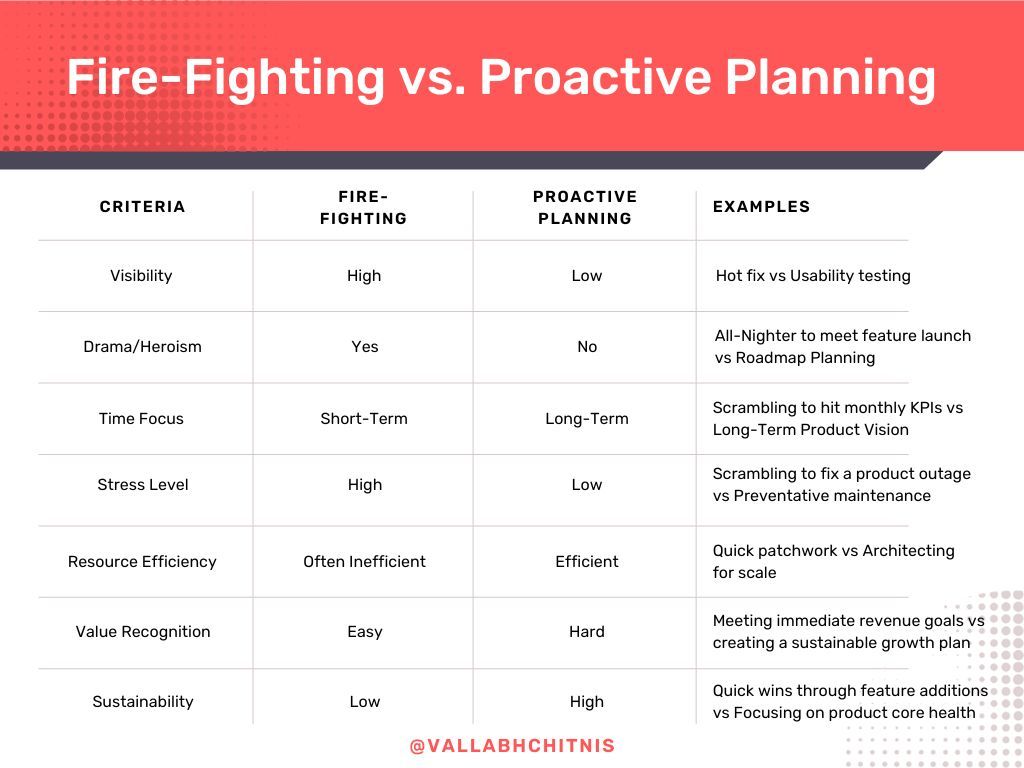🔥 Fire-Fighting: It is when dealing with urgent problems as they arise. It often leads to immediate, visible solutions.
☑ Proactive Planning: It recognizes potential issues and prevents them from becoming urgent problems. It yields long-term stability. When it comes to performance, “fire-fighting” often gets the limelight, while “proactive planning” stands in the shadows. But which genuinely deserves more applause? Let us delve in with examples and some data to back it up!
↪ Fire Fighters vs. Fire Fighting Systems: Fire-fighters are often hailed as heroes when they put out fires. However, fire fighting systems, which prevent fires, go unnoticed.
↪ Emergency Doctors vs. General Practitioners: Emergency doctors get immediate praise for life-saving actions, but general practitioners who help us avoid emergencies don’t get the same recognition.
📊 According to a Harvard Business Review Study, companies focusing on proactive management enjoy 20% higher employee satisfaction and 21% more profitability.
➡ Actionable Recommendations: ⬅
1️⃣ Establish Clear Goals: Understand your long-term objectives. Align your team’s efforts accordingly.
2️⃣ Measure What Matters: Use KPIs that gauge not just immediate output but long-term value as well.
3️⃣ Celebrate the Unsung Heroes: Acknowledge those who prevent crises, not just those who solve them. The inclination to value fire-fighting over proactive planning often stems from a culture that prizes the immediate and visible. For a balanced and efficient work environment, it is vital to recognize both the heroes and the architects. The aim isn’t just resolving crises but also preventing them.
❓ Have you observed this trend in your organization or life?
💡 Are you a team fire-fighter or proactive planner?
#Leadership #OperationalExcellence